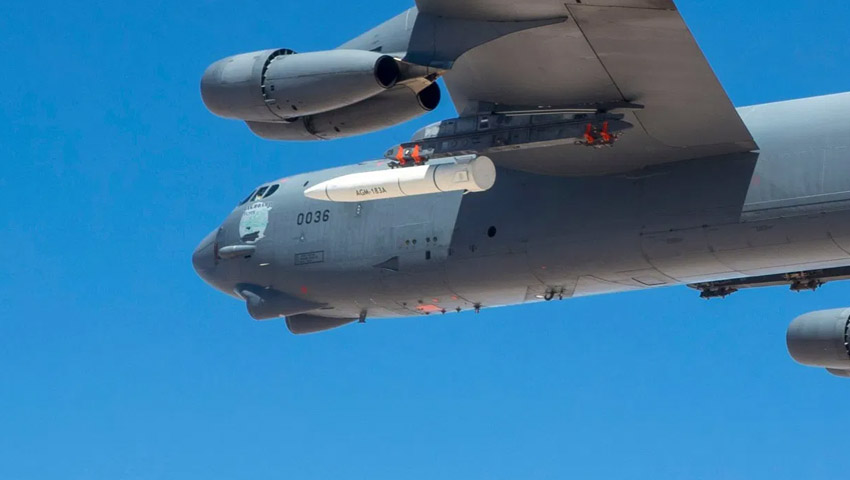DARPA and the US Air Force have announced the successful completion of captive carry tests of two variants of the Hypersonic Air-breathing Weapon Concept (HAWC) and are ready to proceed to first free-flight testing within the calendar year.
To continue reading the rest of this article, please log in.
Create free account to get unlimited news articles and more!
The joint agency and service effort seeks to develop and demonstrate critical technologies to enable an effective and affordable air-launched hypersonic cruise missile.
HAWC performers Lockheed Martin and Raytheon Technologies have each tested advanced air vehicle configurations that promise to achieve and sustain efficient hypersonic flight.
Their upcoming flight tests will focus on hydrocarbon scramjet-powered propulsion and thermal management techniques to enable prolonged hypersonic cruise, in addition to affordable system designs and manufacturing approaches.
Andrew “Tippy” Knoedler, HAWC program manager in DARPA’s Tactical Technology Office, explained, “Completing the captive carry series of tests demonstrates both HAWC designs are ready for free flight.”
Systems that operate at hypersonic speeds — five times the speed of sound (Mach 5) and beyond — offer the potential for military operations from longer ranges with shorter response times and enhanced effectiveness compared with current military systems. Such systems could provide significant payoff for future US offensive strike operations, particularly as adversaries’ capabilities advance.
The HAWC program is a joint DARPA/USAF effort that seeks to develop and demonstrate critical technologies to enable an effective and affordable air-launched hypersonic cruise missile.
“These tests provide us a large measure of confidence – already well informed by years of simulation and wind tunnel work – that gives us faith the unique design path we embarked on will provide unmatched capability to US forces. The program intends to emphasise efficient, rapid and affordable flight tests to validate key technologies,” Knoedler added.
HAWC plans to pursue flight demonstrations to address three critical technology challenge areas or program pillars — air vehicle feasibility, effectiveness and affordability. Technologies of interest include:
- Advanced air vehicle configurations capable of efficient hypersonic flight;
- Hydrocarbon scramjet-powered propulsion to enable sustained hypersonic cruise;
- Approaches to managing the thermal stresses of high-temperature cruise; and
- Affordable system designs and manufacturing approaches.
The HAWC program, since inception, has been executed as a joint program between DARPA and the USAF.
In addition, DARPA is working in co-operation with military services and agencies, including the Missile Defense Agency, US Navy, and NASA to validate, and eventually transition, key technologies.
The extensive flight data collected is intended to increase the confidence in air-breathing hypersonic systems and reduce the risks to potential future acquisition programs across the US government.
Stephen Kuper
Steve has an extensive career across government, defence industry and advocacy, having previously worked for cabinet ministers at both Federal and State levels.

 Login
Login








